Foraging edible wildflowers is probably one of the more fun aspects of eating wild food and it's a great introduction, especially for kids.
Flowers are a lot easier to see than wild greens so foraging them can be a simpler task.
Some are sweet, some spicy, and some almost tasteless, but wild edible flowers are perfect for adding color to salads and other foods.
1. Redbud
The redbud is one of those trees you rarely notice until spring blossom time.
Then they seem to be everywhere--in yards, in the woods, along the roadside.
The purple-pink flowers, some of the first to appear in early spring, emerge before the leaves of the redbud, and nearly cover the tree in an easy-to-spot showy display of spring color.
Redbud flowers taste almost as good as they look. The buds aren't so tasty but the fully-opened flowers are usually tart and slightly sweet. Get them early while they're tender.
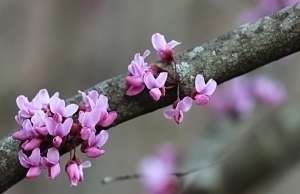
Redbud flowers
2. Violet
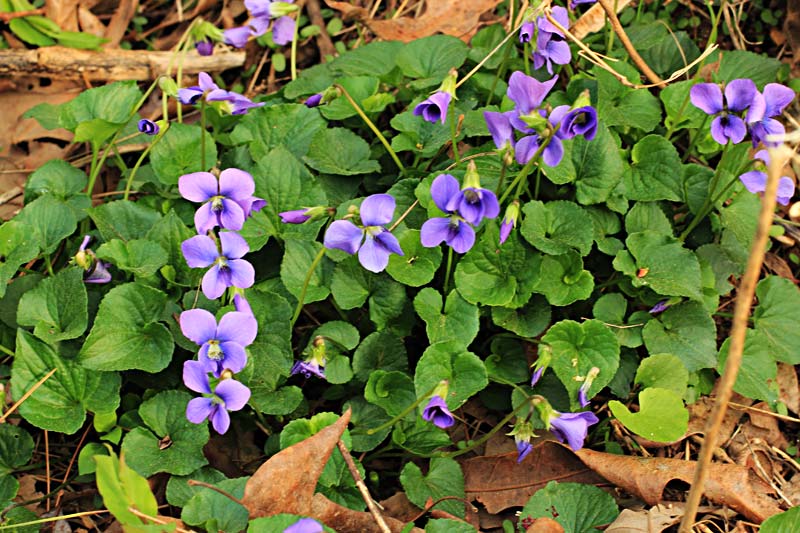
Violets are common on lawns and they're so prolific, it's easy to gather a bunch of flowers quickly.
In Europe, violet flowers have a long history of culinary use that includes violet flower tea, candied violets, and chocolate flavored with violets.
Our Common blue violet (in America) can be used similarly but it's not as sweet tasting or smelling as the European Sweet violet that is usually associated with violet confections.
3. Clover
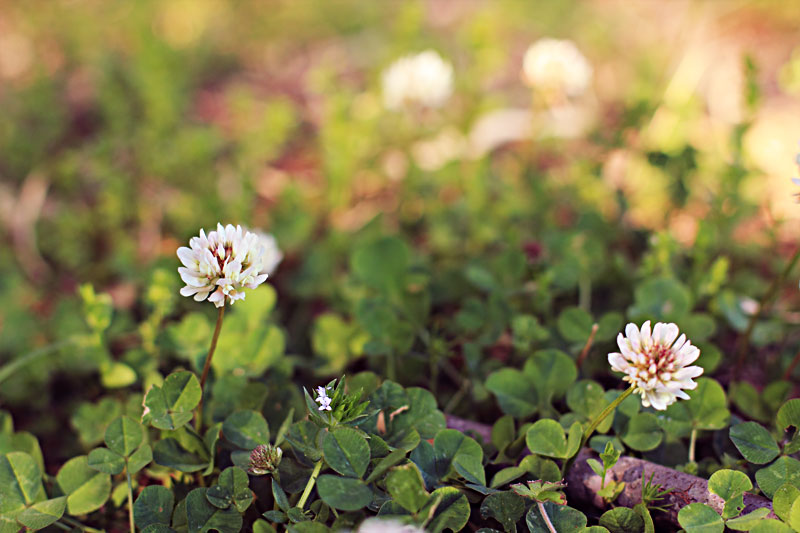
Another common lawn weed, clover flowers are a bit sweet and make a great tea.
White clover is preferable to red clover, though both are edible. Make sure to pick flowers that are free of wilted brown petals.
You can eat the entire clover flower, but the petals alone are sweetest.
Clover does have a few safety caveats:
1) Consume only fresh or dried flowers -- never fermented.
2) Clovers grown in warmer tropical regions contain small amounts of cyanide and should be avoided.
3) Some people are allergic to clover so it's best to start with very small quantities unless you know you're safe.
4. Chickweed
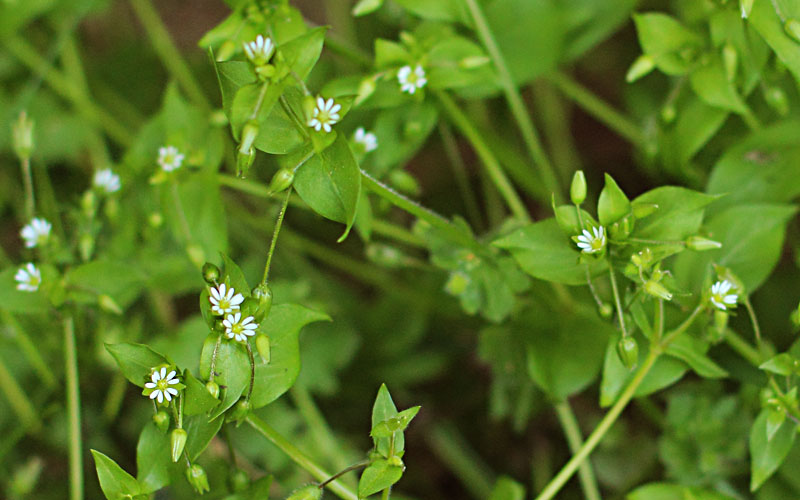
Chickweed is a fairly prolific cool-weather garden weed but its flowers are so tiny, gathering many would prove labor-intensive.
Unless you have a few hours to pick and garble a bowlful, these flowers are probably best suited as a garnish.
5. Wood Sorrel
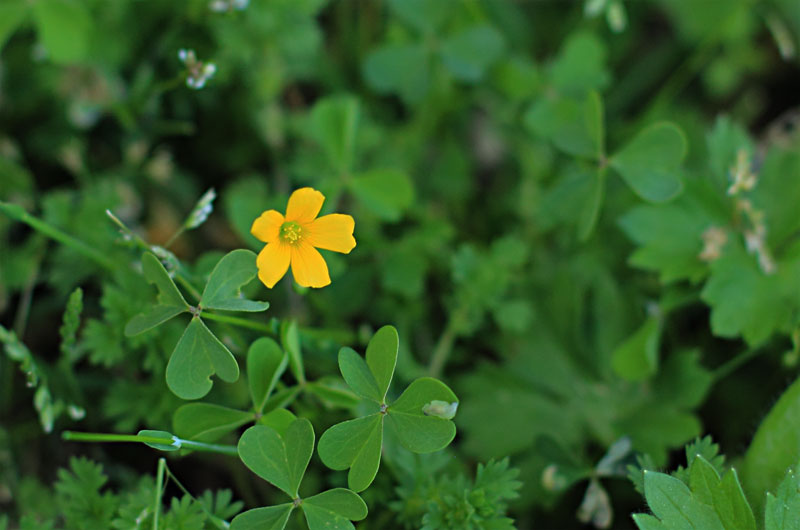
Wood sorrel flowers are also somewhat small but their delicious sourness makes them great as a trail nibble, in salads, on seafoods, and any other food you might season with lemon.
The flowers can be yellow, pink, or white.
6. Black Locust
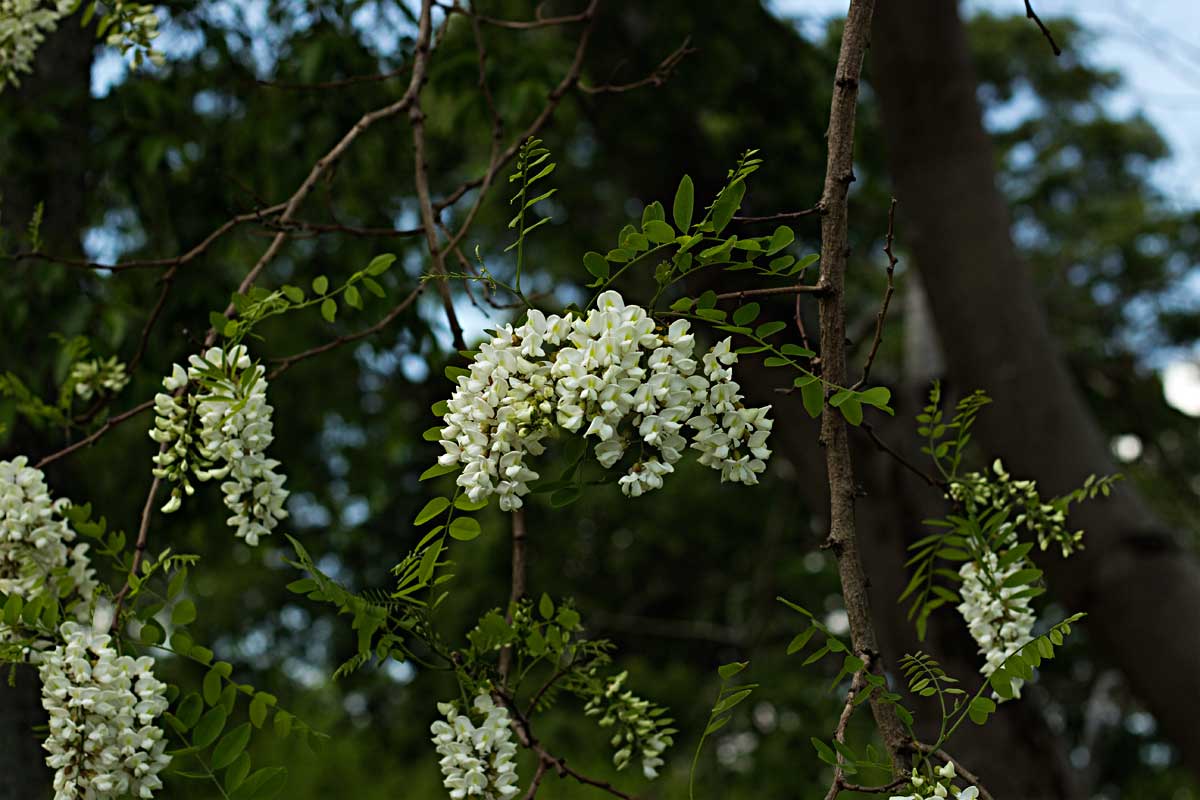
If you blink, you'll miss the black locust bloom.
The flowers come in some time in mid to late spring, depending on temperature and region, anywhere from early April to early June.
Once they're here, they're only here for week or two.
Locust is a legume and the flower's flavor is sweet and pea-like, which makes tasty eaten raw or great for stir-fries.
7. Dandelion
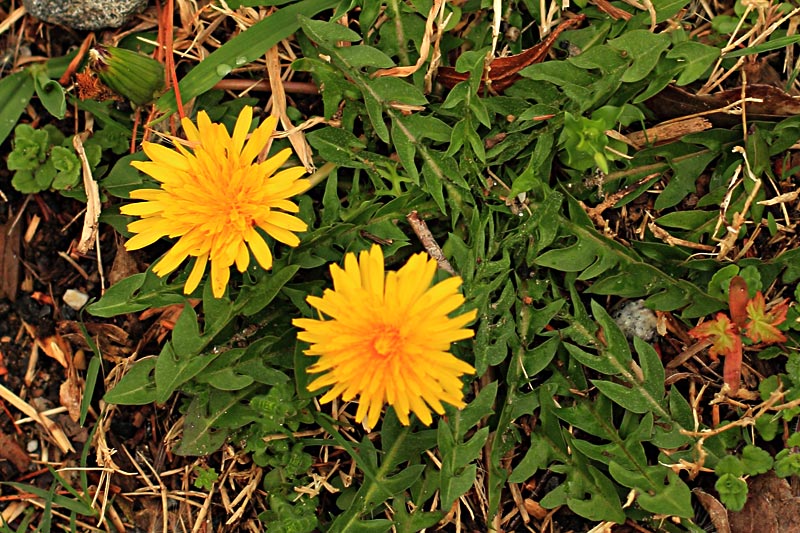
Common dandelion flowers seem to be everywhere by mid-spring.
The yellow petals are sweet but pick away the green parts unless you don't mind the bitter. Eat dandelion flowers raw or cooked.
8. Wisteria
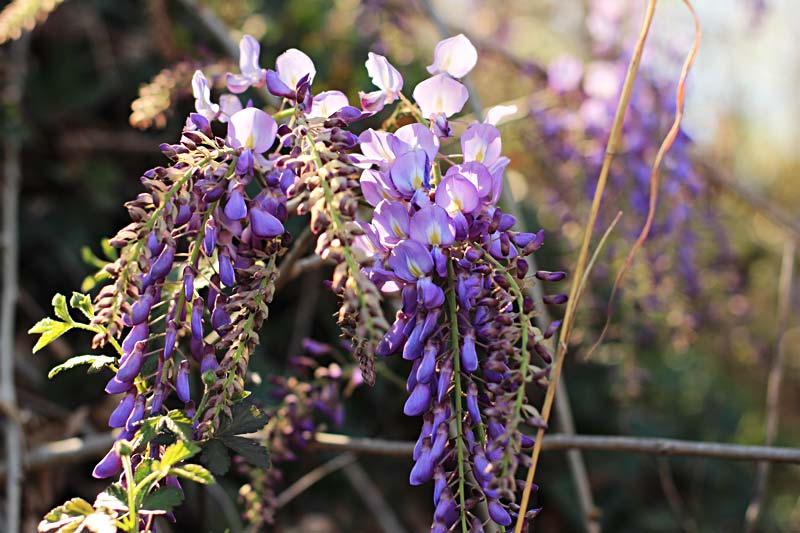
Wisteria blossoms can be seen draped on trees along the roadside for just a few weeks during spring.
The lavender-colored flower clusters are easily spotted while driving, but, like any wild edible, avoid picking them near busy roads since plants absorb toxins and heavy metals from exhaust.
Be careful with wisteria: All parts of the plant contain glycoside, a toxin, in varying degrees.
The flowers are considered edible raw or cooked in moderation but all other parts are extremely poisonous.
Use your own judgment and be sure to meticulously remove the stems so you're eating only the flowers.
9. Forsythia
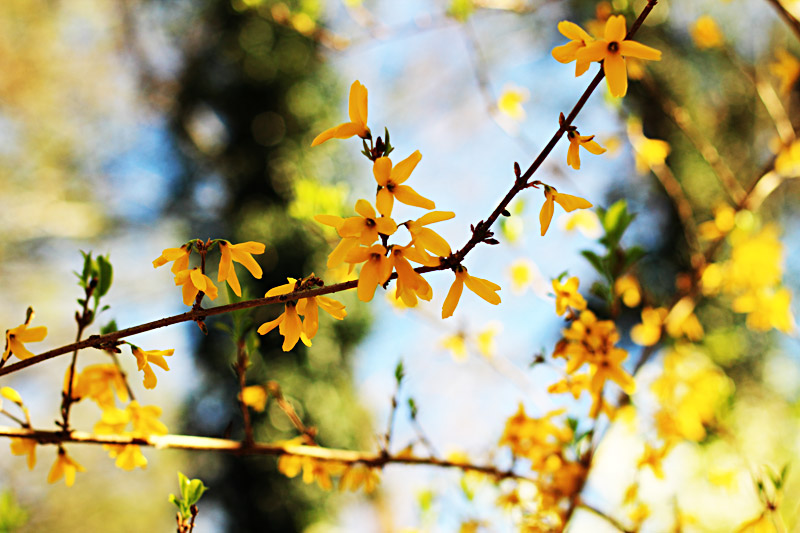
Forsythia really isn't wild but it's so common, both planted and escaped, it deserves mention.
The brilliant yellow flowers are a familiar sight in suburban and rural areas alike, appearing on the bush before the leaves.
And since the leaves come later, it's really easy to forage a bunch of flowers quickly without having to pick through to discard the leaves.
There are countless ways to incorporate edible wildflowers into your recipes.
Check out our wildflower spring rolls for some motivation!
Comments
I had no idea you could eat wisteria flowers! Thanks so much for sharing.
They're one of my favorites :)
I love to know about wild edibles and am looking for what to harvest in Autumn, any suggestions for the Mid North Coast of NSW/
I don't know anything about wild edibles in Australia but I just did a quick search and found this book: https://www.eatthatweed.com/edible-weeds-book/
Maybe that would be relevant to the Mid North Coast?
Interesting! I've always just loved wisteria on account of the purple; it's my favourite colour. And forsythia I love because it's a spring bloom. I never had an inkling that they were edible! Thank you for this informative website & for giving me ideas for new foods to try. I'm always open to trying different foods, and I love bright colours. God bless you---and I mean that sincerely.
Good image of Chickweed.
My wife always debates with me regarding the chickweed in our yards. Our grandson and I have always munched on it (at the beginning of Spring), with no ill effects (tastes like peanut butter). She's concerned about the shape of the leaves. Are there different variations with slightly different shapes?
Hi Jerry,
I believe the shape of the leaves will be similar in all varieties of chickweed. The main difference you would see would be in the size of the leaves and whether it's hairy or not (mouse-eared chickweed would be hairy). How different is your plant from the photo? Have you seen it flower?
Jerry, I'm not sure I'd be fond of the taste of chickweed, if it's akin to peanut butter. I loathe peanut butter. Oh well, I'll try it.
Tell me, please, can locust pods or beans be eaten? They grow all over where I live. Thanks!
There is conflicting info on locust seeds but lots of people have eaten them with no ill effects. And I know people eat the gooey "honey" in honey locust pods.
Great read. My question is this. If I dried clover flowers and then made a tincture (using vodka) with them. Would that be considered fermented and a no no.
It would not be fermented--it would just be a tincture. You could just put them in the vodka fresh, though. You wouldn't need to dry them first.
Thanks for the advice. I've now picked over two ounces of white clover flowers. Do you have any tips about ounces of flowers to ounces of alcohol; and how long to steep.
Here's a good article on how much alcohol, what proof, how long to steep, etc.: https://blog.mountainroseherbs.com/guide-tinctures-extracts
Are white violets edible?
Yes!
Is Colorado northern/cold enough to eat white clover safely?
Also, there’s a similar looking plant to clover which is inedible, but luckily, it doesn’t have the pale chevrons. Might be worth noting here.
Yes, Colorado should be fine. Do you know the name of the similar plant? The only close look alike I know of is wood sorrel which is edible (mentioned above also).
Where can I find a stand of cattails? I've never seen any by the river, which is near where I live, nor along the irrigation ditches. I have read & heard the many uses for them, but I can't find any! Thank you for taking time to read my plea.
Where do you live? I see them all over along the road but I'm currenly in the Coastal Plain. When I was in the mountains, I mostly would only see them in bogs and on the edges of a few ponds.